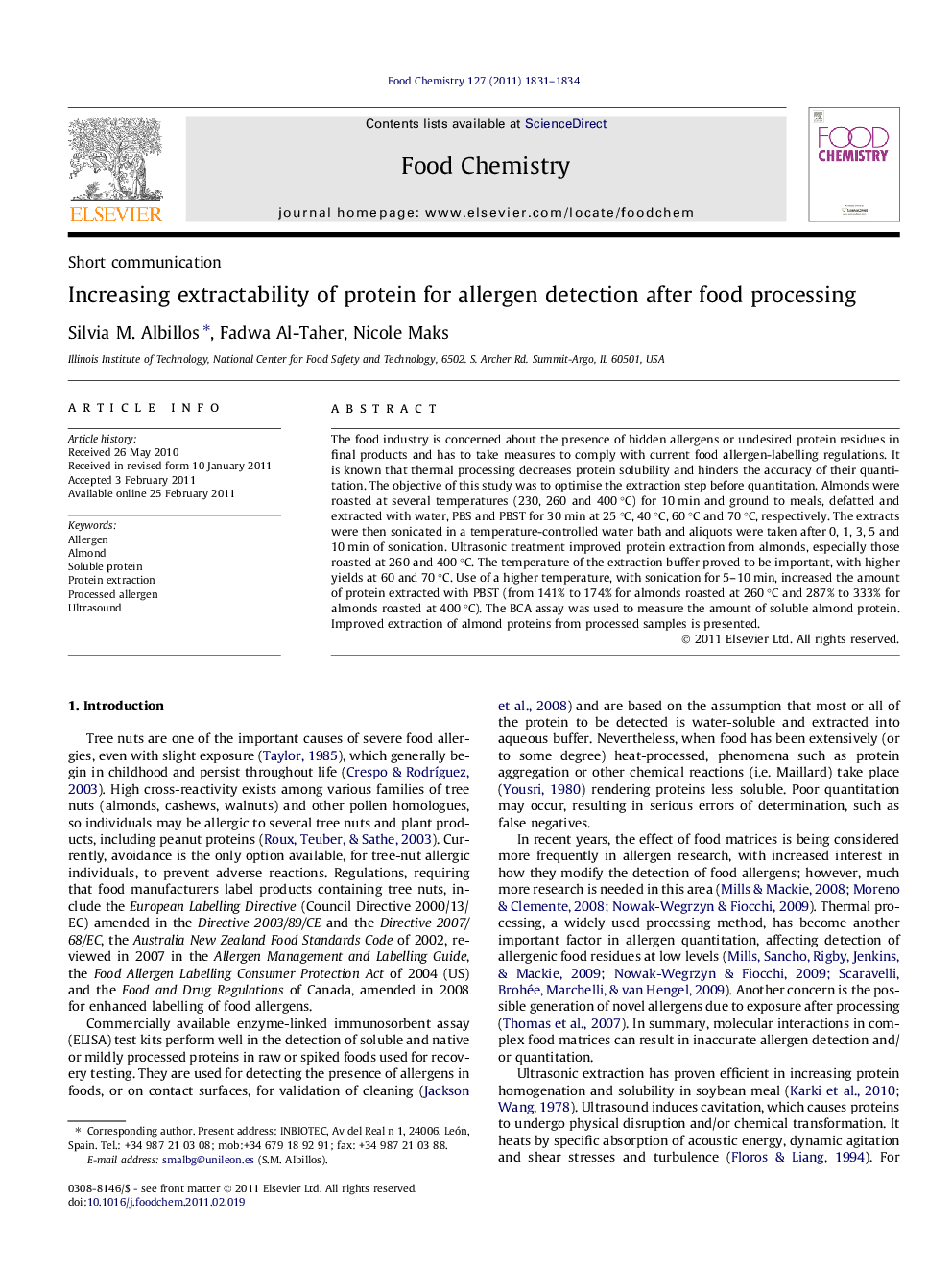| Article ID | Journal | Published Year | Pages | File Type |
|---|---|---|---|---|
| 1184709 | Food Chemistry | 2011 | 4 Pages |
The food industry is concerned about the presence of hidden allergens or undesired protein residues in final products and has to take measures to comply with current food allergen-labelling regulations. It is known that thermal processing decreases protein solubility and hinders the accuracy of their quantitation. The objective of this study was to optimise the extraction step before quantitation. Almonds were roasted at several temperatures (230, 260 and 400 °C) for 10 min and ground to meals, defatted and extracted with water, PBS and PBST for 30 min at 25 °C, 40 °C, 60 °C and 70 °C, respectively. The extracts were then sonicated in a temperature-controlled water bath and aliquots were taken after 0, 1, 3, 5 and 10 min of sonication. Ultrasonic treatment improved protein extraction from almonds, especially those roasted at 260 and 400 °C. The temperature of the extraction buffer proved to be important, with higher yields at 60 and 70 °C. Use of a higher temperature, with sonication for 5–10 min, increased the amount of protein extracted with PBST (from 141% to 174% for almonds roasted at 260 °C and 287% to 333% for almonds roasted at 400 °C). The BCA assay was used to measure the amount of soluble almond protein. Improved extraction of almond proteins from processed samples is presented.
Research highlights► Allergen detection and quantitation is essential from a health standpoint. ► Food allergens are usually detected in soluble way by immunoassays such as ELISA. ► The extent of food processing affects the amount of extractable allergen. ► We improved the extraction of soluble allergens by means of mild sonication.
